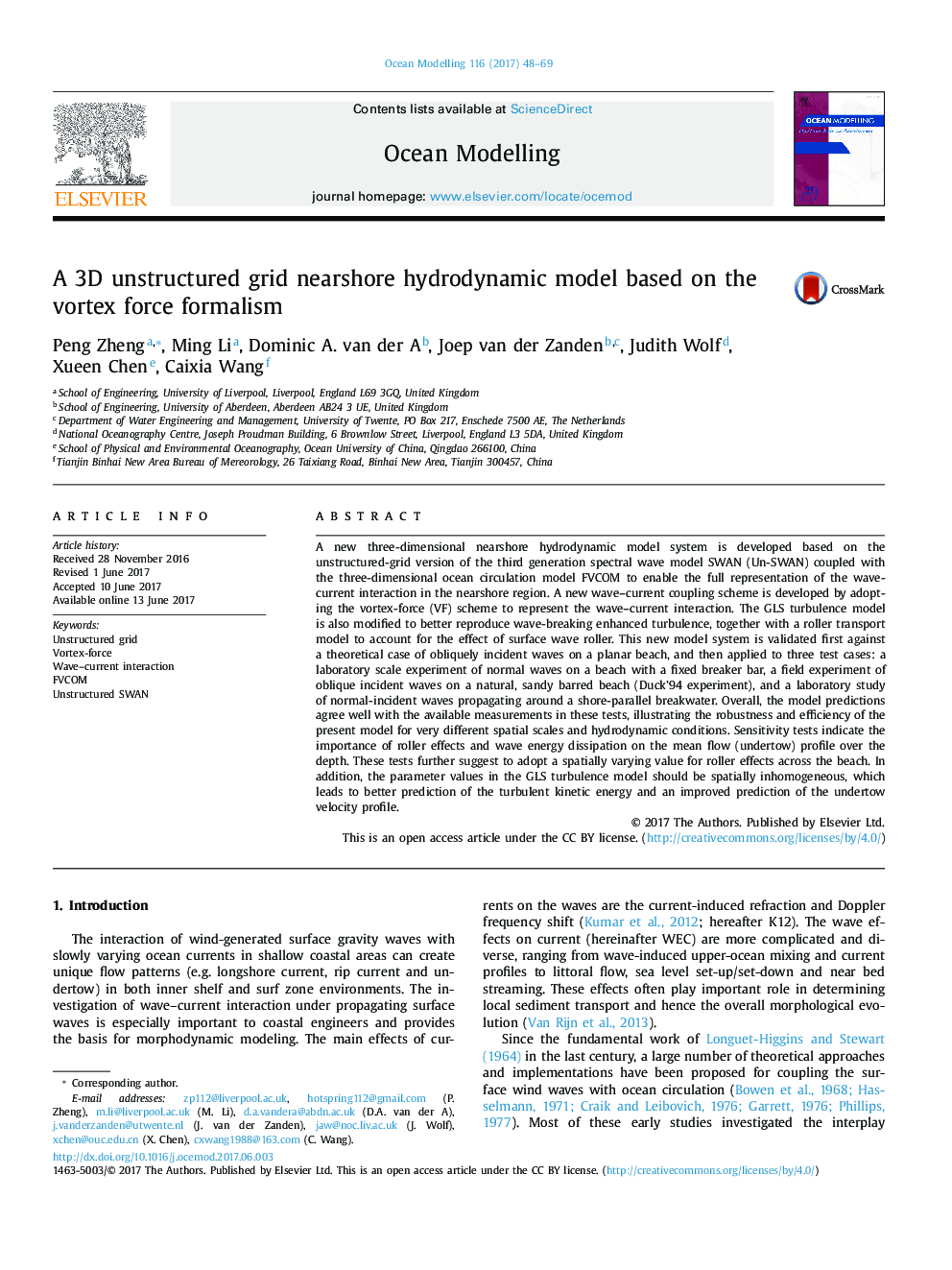| Article ID | Journal | Published Year | Pages | File Type |
|---|---|---|---|---|
| 5766449 | Ocean Modelling | 2017 | 22 Pages |
â¢Unstructured-grid version of SWAN is coupled to FVCOM enabling full integration of wave effects on current and vice versa.â¢A new wave-current coupling scheme is developed based on the vortex-force (VF) formalism.â¢The GLS turbulence model is modified to better reproduce the wave-breaking enhanced turbulence.â¢A roller transport model is implemented to account for wave breaking under influence of the surface wave roller.
A new three-dimensional nearshore hydrodynamic model system is developed based on the unstructured-grid version of the third generation spectral wave model SWAN (Un-SWAN) coupled with the three-dimensional ocean circulation model FVCOM to enable the full representation of the wave-current interaction in the nearshore region. A new wave-current coupling scheme is developed by adopting the vortex-force (VF) scheme to represent the wave-current interaction. The GLS turbulence model is also modified to better reproduce wave-breaking enhanced turbulence, together with a roller transport model to account for the effect of surface wave roller. This new model system is validated first against a theoretical case of obliquely incident waves on a planar beach, and then applied to three test cases: a laboratory scale experiment of normal waves on a beach with a fixed breaker bar, a field experiment of oblique incident waves on a natural, sandy barred beach (Duck'94 experiment), and a laboratory study of normal-incident waves propagating around a shore-parallel breakwater. Overall, the model predictions agree well with the available measurements in these tests, illustrating the robustness and efficiency of the present model for very different spatial scales and hydrodynamic conditions. Sensitivity tests indicate the importance of roller effects and wave energy dissipation on the mean flow (undertow) profile over the depth. These tests further suggest to adopt a spatially varying value for roller effects across the beach. In addition, the parameter values in the GLS turbulence model should be spatially inhomogeneous, which leads to better prediction of the turbulent kinetic energy and an improved prediction of the undertow velocity profile.
